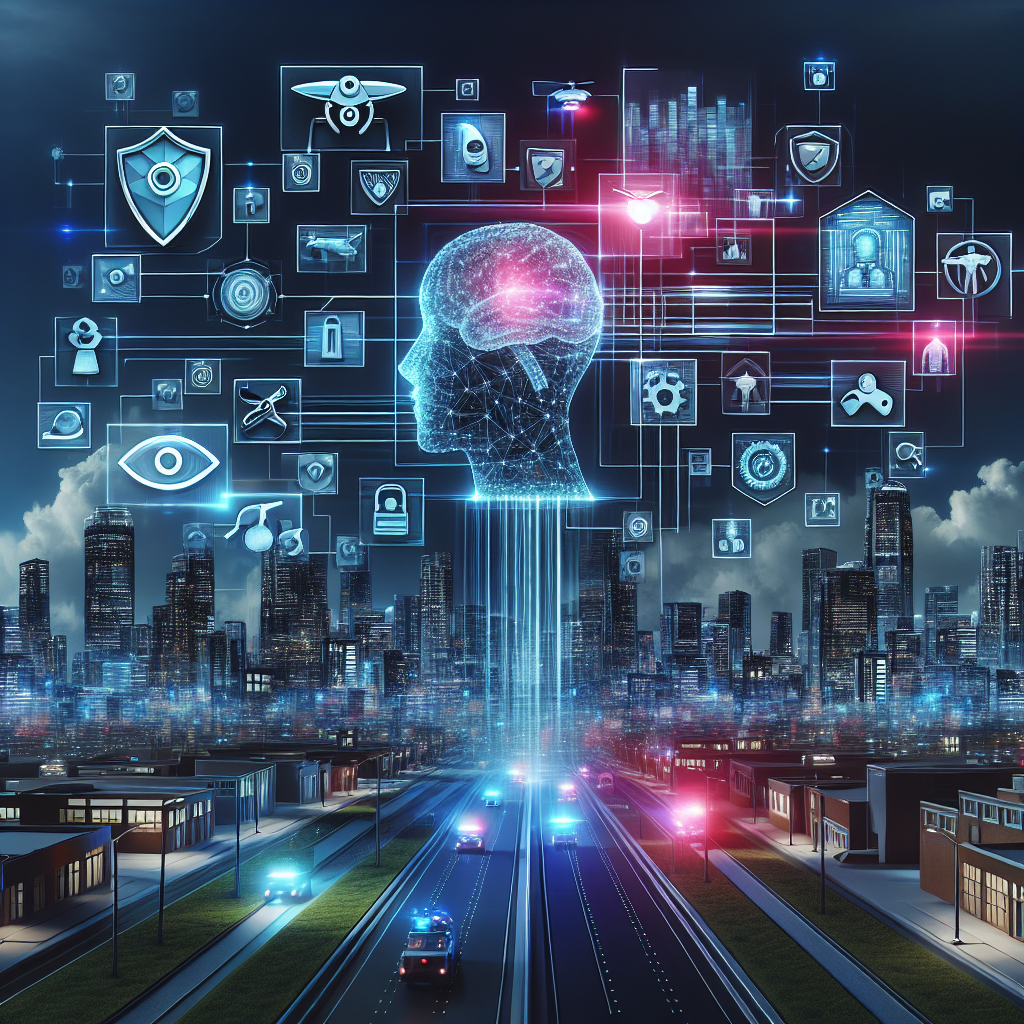Artificial Intelligence (AI) has been increasingly deployed in various industries to streamline processes, increase efficiency, and improve decision-making. One area where AI has shown significant potential is in law enforcement, where it can be used to enhance crime detection and improve overall safety and security in communities. By leveraging AI technology, law enforcement agencies can analyze vast amounts of data, identify patterns, and predict potential criminal activities, ultimately leading to a more proactive and effective approach to crime prevention and investigation.
AI Deployment in Law Enforcement
One of the key ways in which AI is being deployed in law enforcement is through the use of predictive analytics. By analyzing historical crime data, AI algorithms can identify patterns and trends that may indicate where and when crimes are likely to occur. This information can then be used to allocate resources more effectively and proactively deploy officers to areas with a higher likelihood of criminal activity. This predictive capability allows law enforcement agencies to be more proactive in preventing crimes before they happen, rather than simply reacting after the fact.
Another area where AI is making a significant impact is in video surveillance and analysis. With the proliferation of security cameras in public spaces, law enforcement agencies are inundated with vast amounts of video footage that needs to be monitored and analyzed. AI-powered video analytics can help automate this process by flagging suspicious activities, identifying individuals, and tracking their movements. This technology enables law enforcement agencies to more efficiently monitor and respond to potential security threats in real-time.
Furthermore, AI is also being used in the field of forensic analysis to help solve cold cases and identify suspects. By analyzing DNA evidence, fingerprints, and other forensic data, AI algorithms can help match evidence to potential suspects and generate leads in criminal investigations. This technology has the potential to revolutionize the field of forensic science by accelerating the process of identifying and apprehending criminals.
In addition to crime detection and investigation, AI is also being used to improve communication and transparency within law enforcement agencies. Chatbots and virtual assistants powered by AI technology can help streamline internal communications, assist officers in accessing information more quickly, and provide real-time updates on ongoing investigations. This not only enhances the efficiency of law enforcement operations but also improves overall collaboration and coordination among officers.
Moreover, AI-powered tools such as facial recognition technology are also being used to identify and track individuals of interest. While controversial due to concerns about privacy and potential bias, facial recognition technology has the potential to enhance law enforcement efforts by quickly identifying suspects and locating missing persons. By leveraging AI technology, law enforcement agencies can leverage the power of facial recognition to enhance public safety and security.
FAQs:
Q: How is AI being used in law enforcement?
A: AI is being used in law enforcement to enhance crime detection, improve predictive analytics, streamline forensic analysis, automate video surveillance, and improve communication and collaboration among officers.
Q: What are the benefits of AI deployment in law enforcement?
A: The benefits of AI deployment in law enforcement include improved crime detection, proactive crime prevention, more efficient resource allocation, faster forensic analysis, enhanced communication among officers, and increased public safety and security.
Q: What are some potential challenges of AI deployment in law enforcement?
A: Some potential challenges of AI deployment in law enforcement include concerns about privacy, bias in AI algorithms, ethical implications of using AI technology, and the need for proper training and oversight to ensure responsible use of AI tools.
Q: How can law enforcement agencies ensure the responsible deployment of AI technology?
A: Law enforcement agencies can ensure the responsible deployment of AI technology by implementing clear policies and guidelines for the use of AI tools, providing adequate training to officers on how to use AI technology ethically and responsibly, and conducting regular audits to ensure compliance with regulations and ethical standards.
In conclusion, AI deployment in law enforcement has the potential to revolutionize the way crimes are detected, prevented, and investigated. By leveraging the power of AI technology, law enforcement agencies can analyze vast amounts of data, identify patterns, and predict potential criminal activities, ultimately leading to a more proactive and effective approach to crime prevention and investigation. While there are challenges and concerns associated with the use of AI in law enforcement, the benefits of AI deployment far outweigh the risks, and when implemented responsibly, AI technology has the potential to enhance public safety and security in communities.

